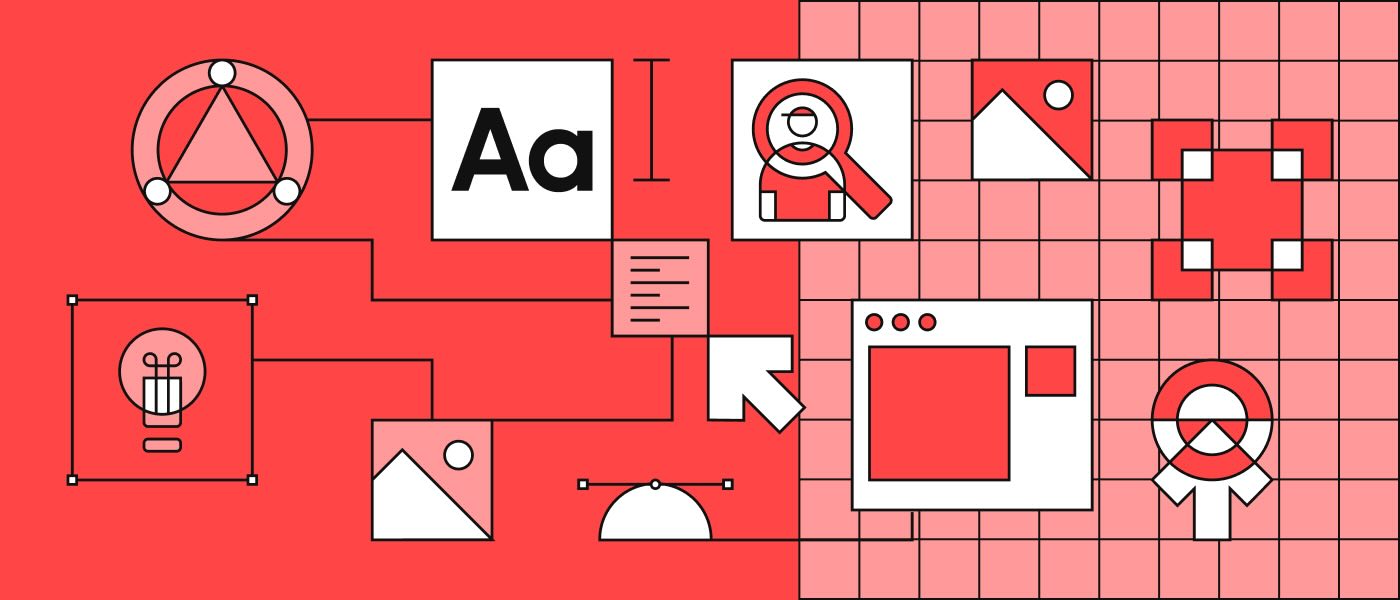Framer vs WordPress

An in-depth comparison of Framer vs WordPress for web development: explore the pros and cons of each platform and learn how to transition between them effectively.
Framer vs WordPress: Pros and Cons
No-code tools like Framer and traditional CMS platforms like WordPress both promise faster shipping. They just take different paths. This guide gives a balanced view so you can match the tool to your goals, team, and budget.
Main differences between Framer and WordPress
Framer is a design-first, no-code tool. You compose pages visually and ship them as static sites with built-in hosting. It shines when you need modern UI, quick iteration, and tight control over layout and motion.
WordPress is an open-source CMS. It runs on a server with a database and supports themes, plugins, and custom code. It excels at content workflows, roles, and long-living websites that change often.
The workflow feels different. In Framer, you prototype, preview, and publish in one place. In WordPress, you plan the content model, pick a theme or builder, extend with plugins, and deploy to your host. Framer’s “what you see is what ships” gives strong design fidelity. WordPress’s ecosystem gives breadth and depth for complex needs.
Framer pros and cons
Pros
- Visual design with strong layout, animation, and modern UI patterns
- Real-time preview and fast iteration from prototype to production
- Clean, static output that can be quick by default
- Hosting, SSL, and deploys are built in
- Low setup friction for small teams and single-page sites
Cons
- Limited plugin ecosystem and fewer deep integrations out of the box
- Scaling content models and complex roles can be hard
- Advanced SEO and internationalization need workarounds
- Heavier back-office needs often require moving to a CMS
- Vendor lock-in on hosting and features
For UI-heavy development where the page is the product, Framer is a joy. You keep pixel accuracy from prototype to live site, which fits our studio’s design-to-dev handoff approach.
WordPress pros and cons
Pros
- Massive plugin ecosystem for SEO, forms, search, commerce, SSO, and more
- Mature content management with roles, workflows, and revisions
- Flexible theming via code or builders like Gutenberg and Elementor
- Easy to find talent and community support
- Full control over hosting, costs, and performance strategy
Cons
- Can feel bloated without careful plugin and theme choices
- Legacy themes and plugins can limit modern UI
- Ongoing patching and security hardening needed
- Performance tuning takes time under high traffic
- Design fidelity can drift during build if handoff is weak
For banks and fintechs, WordPress is often a safe bet for public sites and knowledge hubs. With the right stack, it scales and passes audits.
From Framer to WordPress: when and why to switch?
Teams start in Framer to move fast on a marketing launch or product site. Over time, needs grow. You add blog sections, product docs, gated resources, and translation. You need structured content, approval flows, and SSO. This is where WordPress fits.
Switch when SEO depth, content velocity, and team roles outweigh the simplicity of a design-first tool. If you need plugins for schema, multi-language, advanced sitemaps, or complex redirects, WordPress gives you more control. It also helps when compliance wants backups, audit logs, and well-known hosting.
From WordPress to Framer: when design becomes a priority
If your site is small, design-led, and updated by a single owner, the WordPress overhead can slow you down. Framer can reduce setup time and let you iterate on motion, micro-interactions, and modern layout. Portfolios, single-feature pages, and small product sites do well here.
We see startups move to Framer when they want a fresh visual system and faster landing page tests. For short campaigns and product storytelling, Framer’s built-in preview and publish loop is ideal.
Ease of use and learning curve
Framer is simple to start. Drag, drop, tweak, publish. Designers feel at home and do not need a developer for layout or animation. The trade-off is that complex logic and content models are harder.
WordPress requires setup. You choose hosting, themes, and plugins. Once set, non-technical editors can work in Gutenberg or a page builder. The learning curve is higher up front but smoother for ongoing content operations.
Design capabilities and flexibility
Framer is strong in layout fidelity, component reuse, and motion. It is great for mobile banking app design previews, product pages, and brand sites where UI precision matters. It matches the way our UX/UI team prototypes and hands off to development for pixel-accurate builds.
WordPress can compete using modern builders. Gutenberg, Elementor, and custom themes can ship a clean UI if you keep a tight design-to-dev handoff and component library. We often pair WordPress with a design system to keep banking app UX consistent across web surfaces.
SEO, performance, and scalability
Framer sites can be fast thanks to static output and modern assets. Basic SEO is fine. For programmatic SEO, custom schemas, and multi-region redirects, you may hit limits.
WordPress can deliver excellent technical SEO with the right plugins and setup. You get granular control over metadata, sitemaps, structured data, and editorial workflows. Under load, you will need caching, a CDN, image optimization, and database tuning. With that, WordPress scales to heavy traffic.
For regulated sectors, we design hosting and caching with security in mind. That includes WAF, automatic backups, least-privilege access, and dependency audits.
Ideal users and use cases
Framer fits designers, founders, and small teams who value speed and visual craft. Ideal for single-page sites, product launch pages, portfolios, and small startup sites. It is also handy for UI-heavy development spikes when you want to validate content and flow.
WordPress fits content teams, banks, and fintechs that need structured content, roles, and growth. Ideal for blogs, resource hubs, investor sites, and careers. With the right plugins, it can also support light commerce and complex forms.
Pricing and hosting considerations
Framer offers subscription tiers with hosting included. That keeps billing simple. You pay for usage and team seats. The total cost is clear and scales with your site count.
WordPress software is free. You pay for hosting, a theme or builder, premium plugins, and care. This can be cheaper at a small scale and higher at an enterprise scale. The upside is control. You pick your host, security posture, and performance plan.
Frequently Asked Questions
Is Framer better than WordPress for designers?
For pure visual work and fast iteration, yes. Framer’s canvas, real-time preview, and modern interactions help designers ship what they imagine. If you need content roles, complex navigation, or long-term SEO, WordPress wins. Many teams start in Framer to nail the look, then port to WordPress for scale.
Can I migrate my website from WordPress to Framer?
You can migrate pages and assets, but dynamic content and taxonomies will not map one-to-one. Expect a partial rebuild. We often export content, rebuild key pages in Framer, and keep a light WordPress instance for blog archives if needed.
Does Framer support plugins like WordPress?
Not in the same way. Framer has integrations and embeds, but not a plugin library on the scale of WordPress. If you rely on specialty plugins for SEO, forms, search, or analytics, check Framer’s current support before moving.
Which platform is more SEO-friendly?
For advanced SEO, WordPress. You can control schema, sitemaps, redirects, and localization in detail. Framer can rank well for simple sites but has fewer knobs. We help clients choose based on SEO goals and content plans.
What’s the learning curve like for each platform?
Framer is easier at the start. Designers can publish on day one. WordPress takes more setup, but editors and marketers enjoy a familiar CMS once it is configured. With a solid design-to-dev handoff and training, both can be smooth.
Two quick stories
A youth banking startup needed a sharp, mobile-first site for launch. We built a Framer prototype, validated the flow with teens, then shipped a pixel-accurate build in two weeks. Result: faster signups and clear messaging for KYC onboarding.
A regional bank had a dated WordPress site with scattered plugins. We rebuilt the information architecture, introduced a component library, and tuned performance. Result: 32% faster page loads and a cleaner editing workflow for 14 branches.
How FF Next can help
We are a UX/UI agency for banks and fintechs. Our team ships UI-heavy development with pixel-accurate builds from validated prototypes. We bring deep fintech domain expertise, including youth banking, and offer white-label fintech modules that speed go-live.
We work end-to-end. UX research to map goals and risk. UX/UI to build a strong system. Implementation with a clean design-to-dev handoff. We have delivered projects in 20+ countries and earned notable recognition along the way. That global delivery helps us design for different languages, regulations, and markets.
If you need help choosing Framer or WordPress, we will match the tool to your content model, SEO plan, and team. For Framer, we focus on design fidelity and speed. For WordPress, we define the content schema, pick a lean plugin set, and harden security for PSD2 and GDPR contexts.
What this means for fintech product teams
- Fintech product design and public web. Framer is a good fit for product storytelling and single-feature pages.
- Docs, careers, investor pages, and hubs. WordPress gives you structure, roles, and SEO.
- Mobile banking app design support. We mirror your design system on the web for a clear banking app UX.
- White-label fintech modules. We add KYC, onboarding, calculators, and support flows that shorten timelines.













